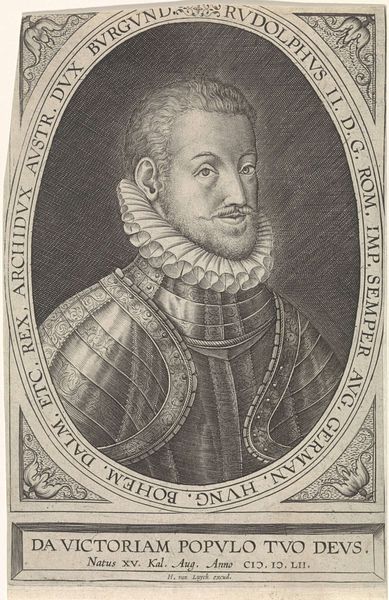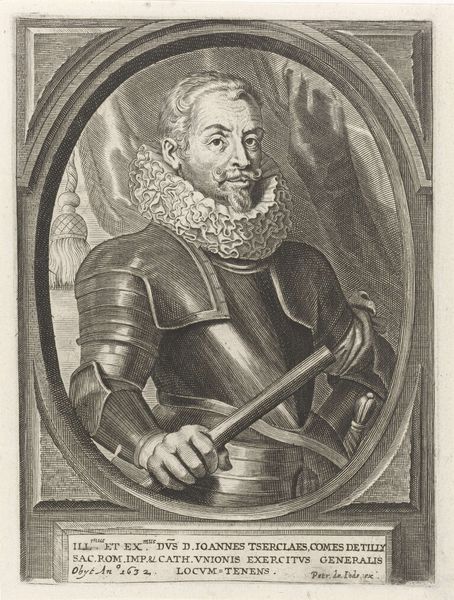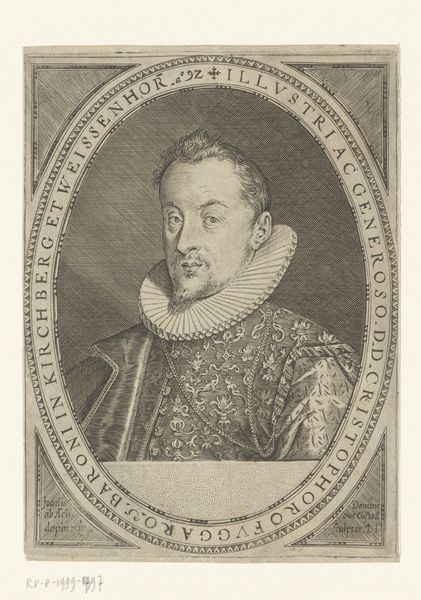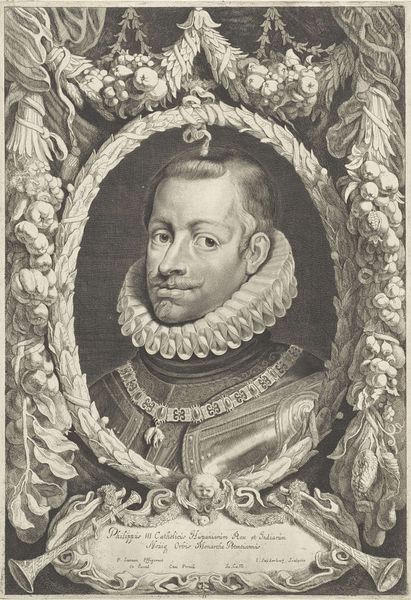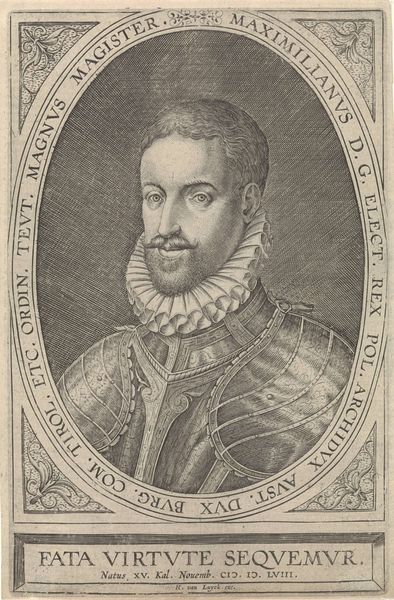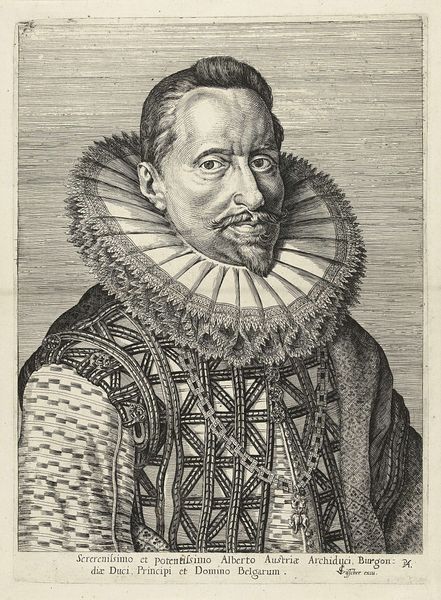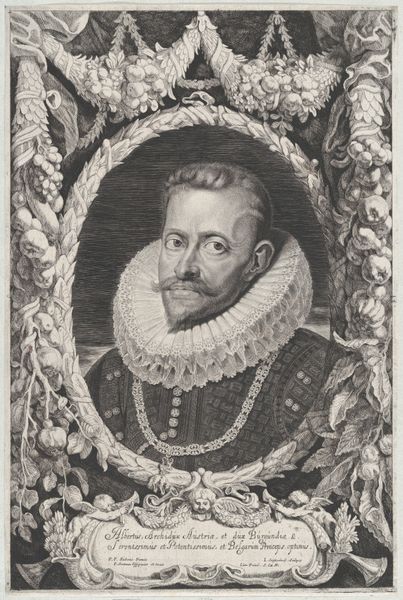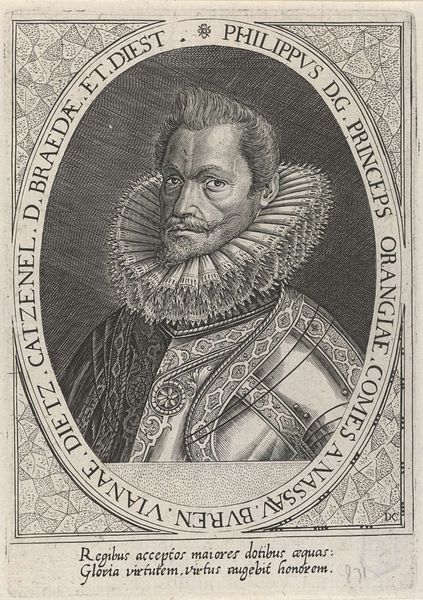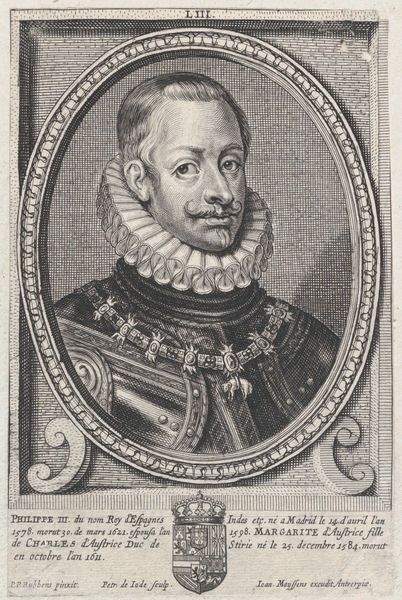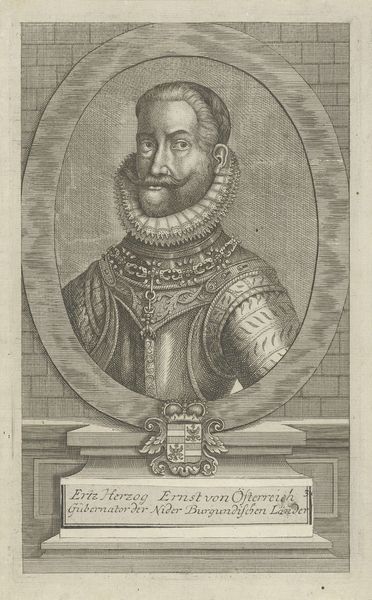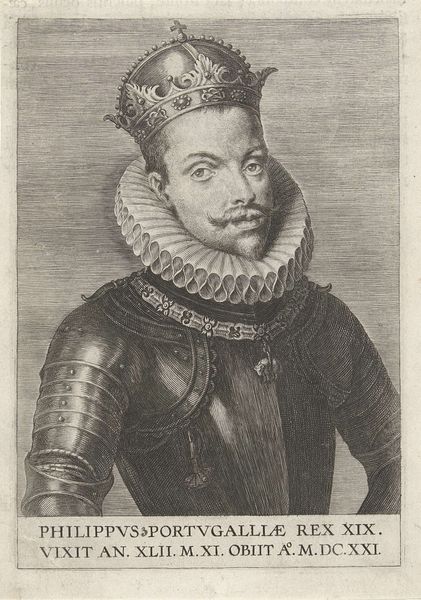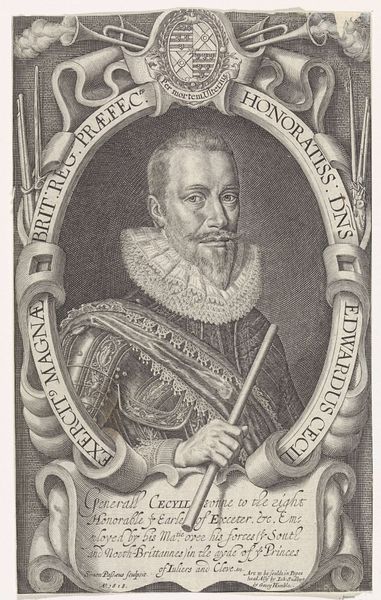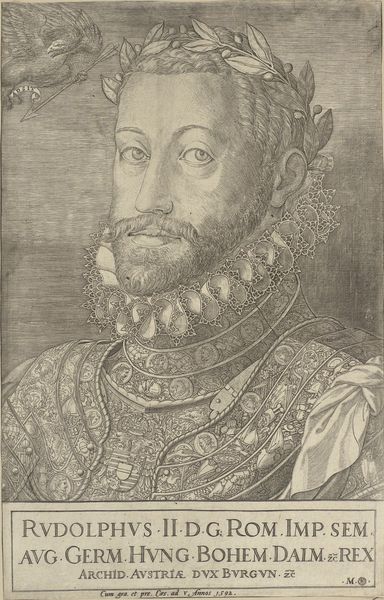
painting, oil-paint
#
portrait
#
baroque
#
portrait
#
painting
#
oil-paint
#
figuration
#
history-painting
#
realism
Dimensions: support height 28.5 cm, support width 22.4 cm, outer size depth 4.3 cm
Copyright: Rijks Museum: Open Domain
Editor: This is an arresting portrait of King Philip III of Spain, created around 1600 by an anonymous artist. The metallic sheen of his elaborate armor is quite striking, almost overwhelming the figure. What catches your eye about this piece? Curator: Initially, I observe the contrast created between the delicate ruff framing his face and the heavily ornamented armor. The meticulous detail applied to rendering the play of light on the metal is fascinating. Notice also the artist's handling of texture—the smoothness of the skin juxtaposed against the complex patterns etched into the armor. How does that textural contrast contribute to the overall effect, in your view? Editor: It feels like it separates his persona from his station, softening him perhaps. The details in the armour, though ornate, pull my eye downward, drawing a contrast to the lightness in his face and collar. Curator: Precisely. This deliberate composition guides the eye, using formal elements to create a narrative. Beyond the representation, consider the abstract shapes and their arrangement. Observe the dominance of vertical lines, interrupted only by the circular ruff. How does this affect your interpretation? Editor: The verticality lends him stature, power… but maybe also rigidity? It’s interesting to think about the shapes contributing to the story beyond just what he’s wearing. Curator: Indeed. Formal analysis allows us to see how elements such as line, shape, texture, and color work together to communicate beyond the literal representation. Understanding this interplay enhances our engagement with the artwork. Editor: It really changes how I view portraits - there’s so much beyond the subject matter if you consider the art’s components themselves. Thanks for pointing that out!
Comments
No comments
Be the first to comment and join the conversation on the ultimate creative platform.
